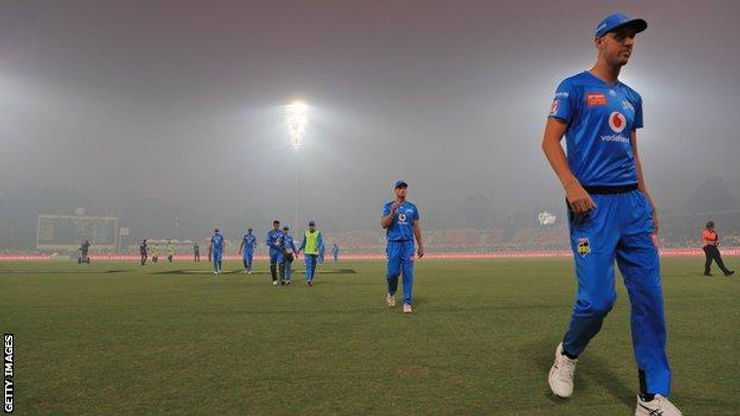By: Ray Zhao
It’s blisteringly hot in a cricket stadium. The cricket players on the field are moving about slowly and lazily. A haze of pollution hangs over the stadium. It’s over 110 degrees, yet the players, in their long-sleeved and trousers, and ice packs, are playing on. One spectator has fainted due to heat, two. Three now.
A few years ago, this would have been a science fiction story out of a person’s imagination, but a few months ago, it happened in real life. In the face of climate change, the second most popular sport in the world is facing an uphill battle to maintain its popularity. In a 2018 climate report by The Climate Coalition and the Priestley International Centre for Climate, researchers found that of all the major outdoor sports, “cricket will be hardest hit by climate change.” The years that have passed since the study have only proven it right.
Cricket players face immense danger when they play in high temperatures. In June, when the West Indies team played matches in Multan, Pakistan, the temperature reached a blistering 111 degrees Fahrenheit. Akeal Hosein, a member of the West Indies team, recently said that playing cricket “felt like you were opening an oven.”
In New Delhi, the South African team also had to endure taxing conditions when it faced India in 110-degree weather. The heat was so bad that even some spectators fainted, and an entire section of the stadium was transformed into a cooling zone for spectators.
Players are already facing health issues as the heat persists. A few years ago, eight players and two members of the coaching and support staff of the South African team were hospitalized in Chennai by what officials said were the combined effects of food poisoning and heat exhaustion. In 2018, English captain Joe Root was hospitalized with health issues such as severe dehydration and heat stress. At one point, a heat-index tracker registered 135.7 Fahrenheit on the field, which is hotter than Death Valley.
Of course, measures are being taken to protect the well-being of cricket players. For South Africa’s recent tour, inflatable tubs, electrolyte capsules, slushies of ice and magnesium, ice towels for the shoulders, face, and back, and ventilated uniforms were just some of the items utilized to mitigate the effects of the heat.
However, these protective measures are not enough. Athletes are “competing in environments that are becoming too hostile to human physiology,” Russell Seymour wrote last year in a climate report regarding cricket. “Our love and appetite for sport risks straying into brutality.”
Seymour, along with many others, believes that to halt cricket’s demise, officials must take action to stop climate change. The sport is already trying to do its part. Cricket stadiums and grounds are now carbon neutral. Cricket of the Indian Premier League wore green uniforms for some matches to heighten environmental awareness.
Yet this is not enough, as climate change must be addressed by everyone. As a spokesman for the West Indies team put it, “In the U.S., people are flying on private jets while they’re asking us not to use plastic straws.”











